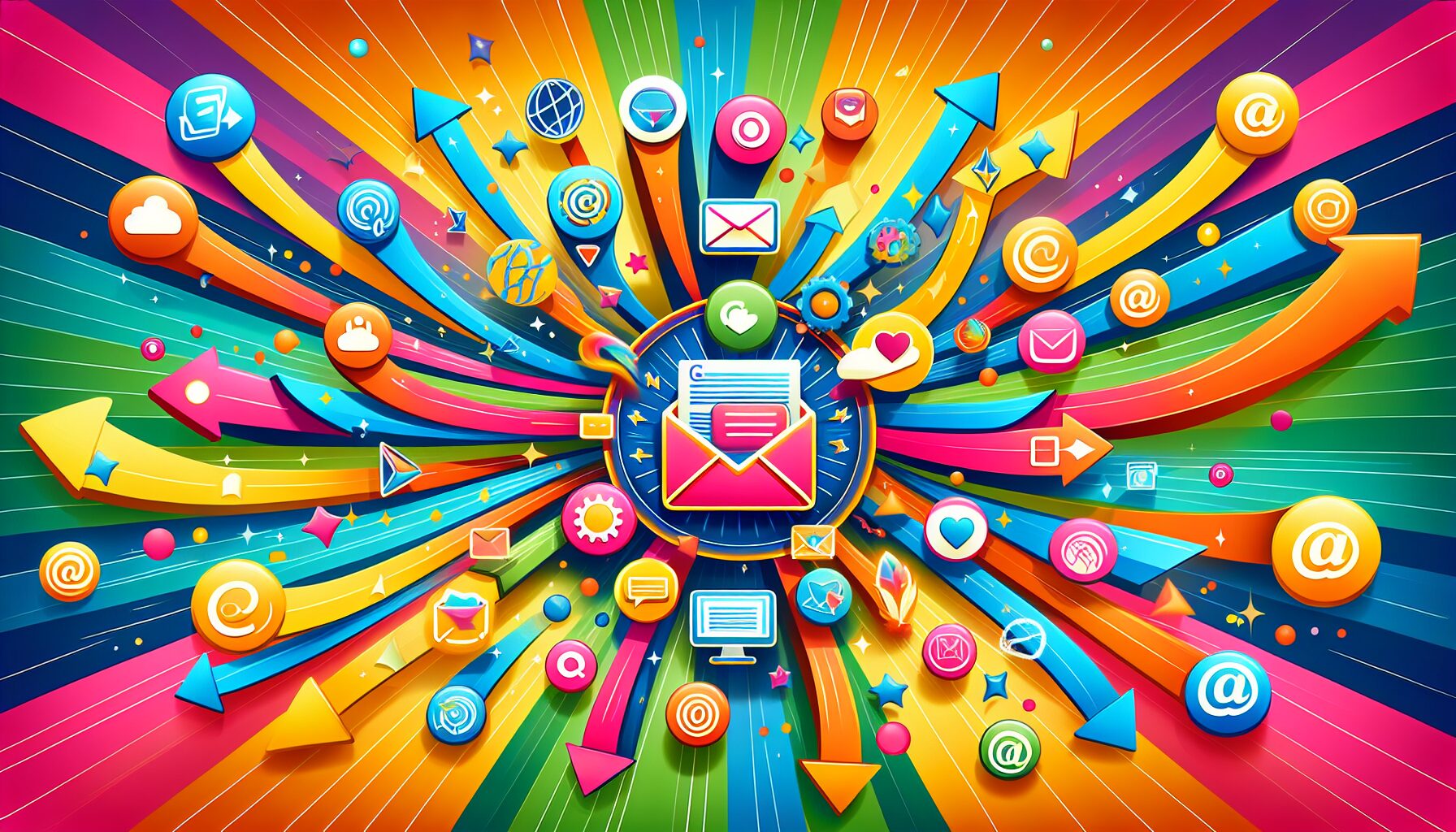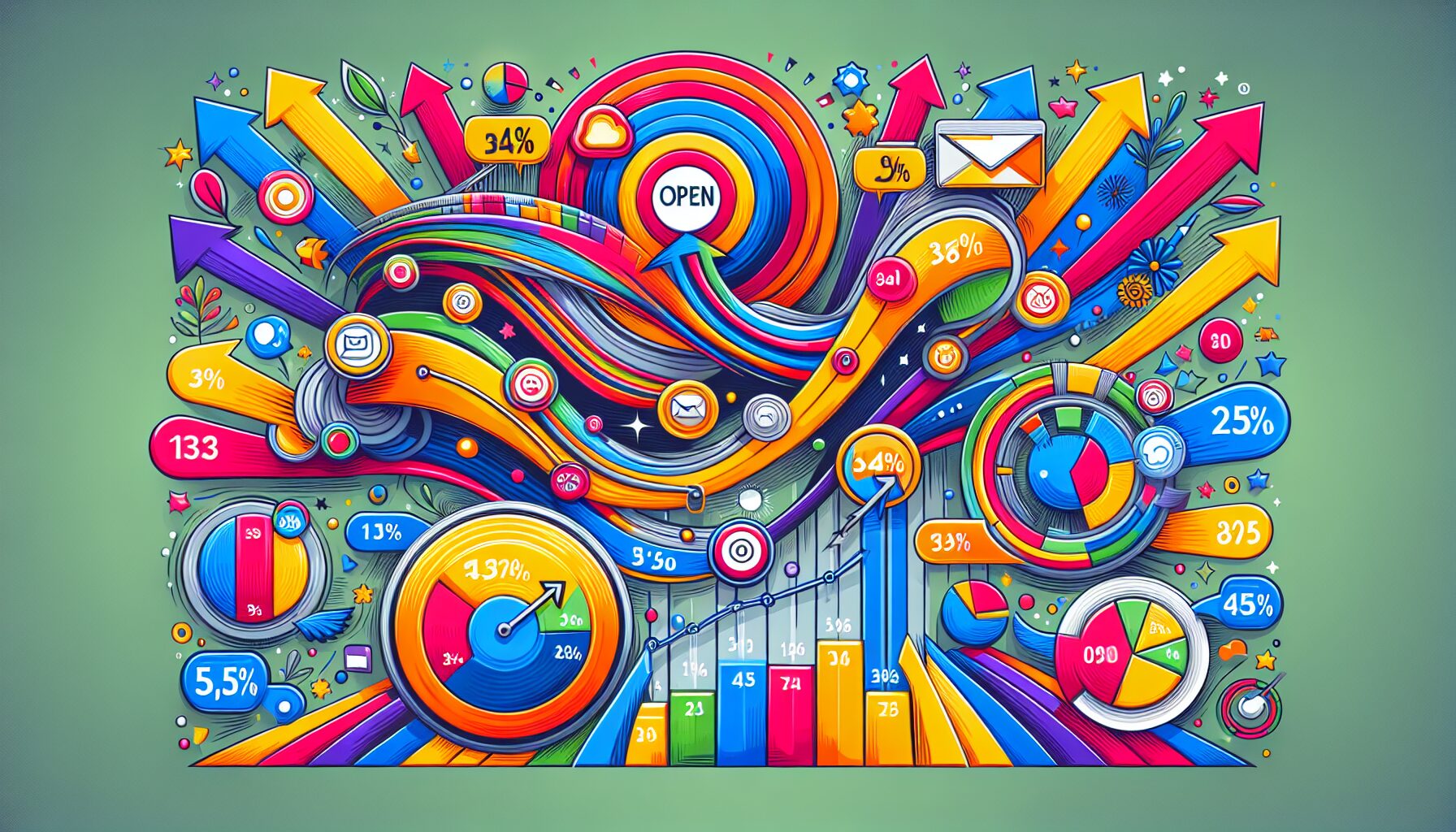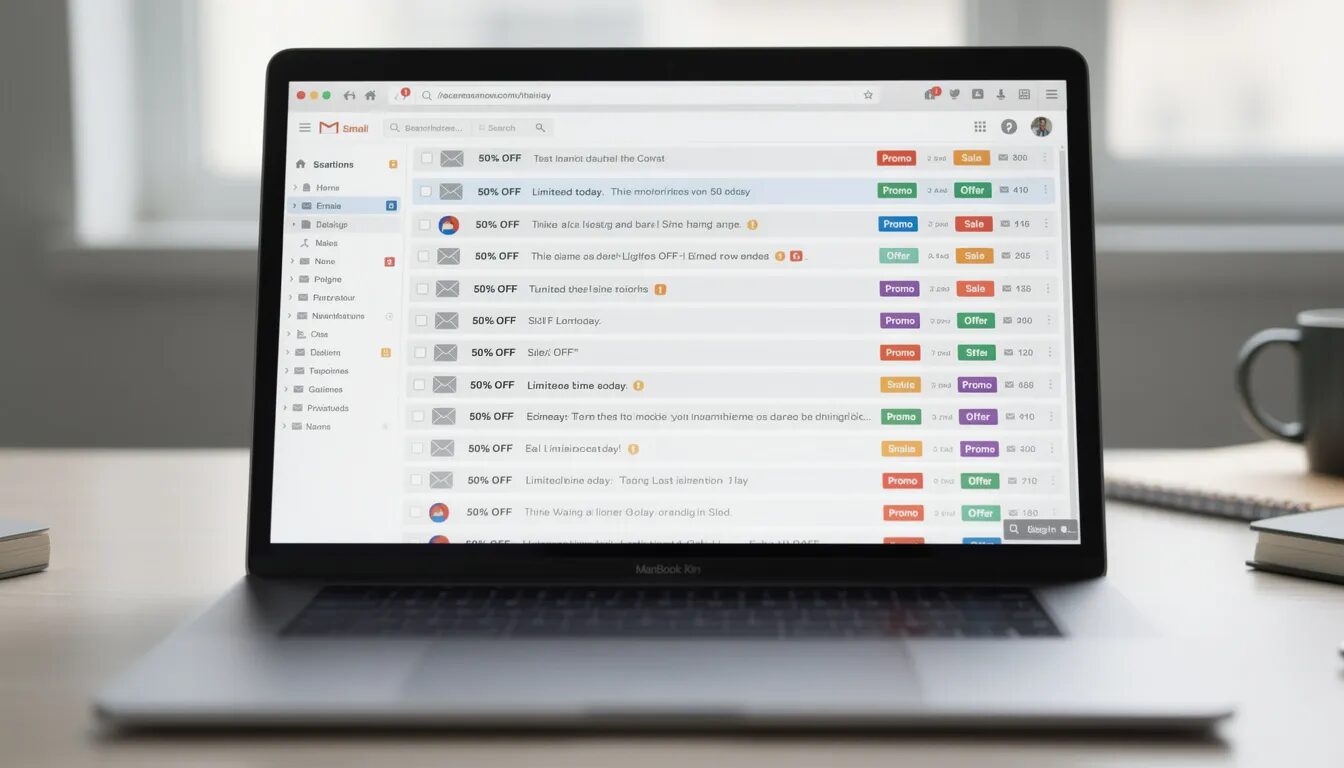
Top Email Marketing Strategies to Boost Engagement
Email marketing lets you communicate directly with your audience to promote products and build brand loyalty. It offers one of the highest returns on investment in digital marketing and allows you to control your customer list, avoiding reliance on social media algorithms. This article will explore strategies to boost your email marketing engagement, covering types of campaigns, personalization, and list-building techniques.
Key Takeaways
-
Email marketing offers unmatched ROI and personalization, providing a direct line of communication with customers.
-
Utilize various email campaign types—promotional, informational, and transactional—to effectively engage your audience at different stages of the buyer’s journey.
-
Continuously analyze and optimize your email performance metrics to refine your strategies and improve engagement.
Understanding Email Marketing

Email marketing is a powerful marketing channel and form of direct marketing that uses email to promote products and foster brand loyalty. It stands out in the digital marketing landscape due to its unique ability to create one-to-one communication, ensuring a more personal connection with each recipient. Unlike social media platforms, where businesses are subject to the whims of algorithm changes, email marketing allows businesses to own their contact lists, ensuring direct access to their customers. This control over communication channels makes email marketing an indispensable email marketing tool for any comprehensive digital marketing strategy.
The benefits of email marketing are manifold. Not only does it drive conversions and build brand loyalty, but it also boasts one of the highest returns on investment (ROI) among digital marketing channels, averaging $36 for every dollar spent. This high ROI is partly due to email marketing’s scalability, which allows campaigns to grow from a few customers to a massive audience with ease. Moreover, email marketing enhances brand awareness by maintaining ongoing communication with customers, keeping your brand top-of-mind. It’s no surprise that more than 70% of consumers prefer to communicate with businesses via email.
Aligning your email marketing campaigns with your overall branding enhances their effectiveness. Customizing outreach based on customer preferences not only increases engagement but also fosters a sense of loyalty and trust among your subscribers. With the expected revenue from email marketing projected to reach $13 billion by 2025, there’s never been a better time to refine your email marketing strategy and capitalize on this powerful marketing channel.
Types of Email Campaigns
Email marketing can be used for various types of campaigns, each serving different purposes and catering to different stages of the buyer’s journey. The main types of email campaigns are promotional, informational, and transactional.
Leveraging various email campaign types enables businesses to engage their audience effectively and cater to their specific needs.
Promotional Emails
Promotional emails are a cornerstone of many email marketing strategies, primarily aimed at driving direct responses and boosting sales. These emails often include incentives such as discounts, limited-time offers, and clear calls-to-action to encourage purchases. The frequency of promotional emails can vary, typically increasing during key periods like Black Friday, while fewer emails are sent during slower times like post-holiday. A well-designed promotional email campaign can create anticipation among customers, leading to increased sales.
For instance, offering a 10% discount on the first order is a common promotional tactic to encourage email subscriptions. Strategically planned campaigns aligned with marketing goals can drive substantial revenue growth.
Informational Emails
Informational emails, such as newsletters, play a vital role in maintaining ongoing communication with subscribers. These emails are typically sent on a regular schedule—weekly, bi-weekly, or monthly—helping to keep your business and products top of mind for your audience. The primary purpose of newsletters is to share valuable content, including tips, articles, updates, and customer reviews, which keeps subscribers engaged and informed.
Scheduled newsletters build brand loyalty by consistently providing value to subscribers. Including a mix of useful content like blog posts and insights ensures newsletters remain informative and engaging. This ongoing communication helps to foster a stronger relationship with your audience and can lead to higher levels of engagement and customer loyalty.
Transactional Emails
Transactional emails are automated messages triggered by specific customer actions, such as signing up or making a purchase. These emails play a crucial role in confirming actions and providing additional information to guide customers through their next steps.
For example, confirmation emails not only assure users that their information has been received but also provide further instructions or recommendations, enhancing the overall customer experience.
Building an Effective Email Marketing Strategy
Creating an effective email marketing strategy serves as a roadmap to guide your campaigns and ensure their success. This involves several key steps, including defining your goals, segmenting your audience, and crafting compelling content. Clear objectives aligned with campaigns enable you to measure success and make necessary performance adjustments.
Defining Your Goals
Setting clear objectives is the first step in any successful email marketing campaign. These goals should align with your overall business objectives and provide direction for your campaigns. Using the S.M.A.R.T. framework—Specific, Measurable, Achievable, Realistic, and Timely—can help in formulating effective goals. For example, your goals might include increasing brand awareness, driving sales, or improving customer retention.
Once your goals are set, developing an action plan is essential to outline the steps needed to achieve these goals. This includes determining the types of email campaigns you’ll use, identifying your target audience, and setting benchmarks to measure success.
Gathering context before setting goals allows you to know the average email stats in your industry and use them as benchmarks.
Segmenting Your Audience
Segmenting your audience is crucial for improving response rates and generating more revenue. This process involves dividing your email list into smaller sub-lists with common traits, such as demographic information, purchase history, or engagement levels. Understanding your audience allows you to create specialized campaigns that resonate, leading to higher engagement and conversions.
One effective method for segmenting your email list is by creating separate lead magnets and opt-in forms tailored for each part of the buyer’s journey. Advanced segmentation techniques allow marketers to tailor emails to specific audience personas, enhancing relevance and effectiveness.
Implementing a sunset policy by removing inactive subscribers can also improve overall list quality and engagement.
Crafting Compelling Content
Compelling content is the cornerstone of any successful email marketing campaign. The email subject line is particularly crucial, as it determines whether the email is opened. Subject lines should create intrigue or a desire to open to ensure higher open rates. Using preview text effectively can add context and boost open rates.
The recommended content mix for email campaigns is 80% valuable information and 20% promotions. Email content should align with your brand tone and stay focused on one topic. Incorporating visuals can significantly enhance engagement and memorability. Effective call-to-action buttons must be prominent and lead to relevant offers.
Optimizing email campaigns for mobile devices is essential for enhancing user conversion rates. Using storytelling techniques within email content can significantly boost engagement rates. Subscribers should feel anticipation towards opening your emails, knowing they will receive valuable and engaging content.
Growing Your Email List

A robust list of subscribers is the foundation of any successful email marketing campaign. The first step to building an email marketing list is establishing clear goals. Depending on these goals, you can employ various methods to grow your email list, such as using opt-in forms and lead magnets.
Engaging content that is entertaining and valuable encourages subscribers to share emails with their networks, helping to expand your list.
Opt-In Forms
Opt-in forms serve as the gate between future leads and the asset created for them by capturing prospects’ information. Individuals must give express permission via opt-in to join your email list. Creating visible and simple subscription opportunities leads to increased sign-ups, hence opt-in forms should be placed in high-traffic areas of a website.
Effective opt-in forms should include an attractive design, an attention-grabbing header, and an enticing offer to encourage sign-ups. Sliders and lightbox opt-ins offer an unobtrusive subscription method without disrupting user experience.
It’s vital that the copy in an opt-in form reflects a truthful representation of the offer to build trust.
Lead Magnets
Lead magnets are essential tools in email marketing that provide value to entice visitors into joining an email list. They should provide significant value and relevance to the target audience to effectively draw them into your email list.
Offering a free resource, such as a downloadable tool or guide, in exchange for an email address is a proven method to grow an email list. Utilizing effective lead magnets can significantly enhance your ability to grow and maintain a robust email subscriber list.
Personalization and Automation

Personalization and automation are key elements in creating successful email marketing campaigns. Personalization involves tailoring content to meet individual customer preferences and behaviors, making customers feel valued and understood.
On the other hand, automation enables complex communication flows across multiple channels, enhancing subscriber relationships and improving targeting and engagement.
Personalized Content
Emails that are personalized play a crucial role in fostering strong customer relationships. It is essential for effective communication and engagement. When emails are personalized, they make customers feel valued and understood, which can significantly boost engagement rates. Personalization increases open, click-through, and conversion rates, making it a powerful tool for email marketers. For example, Netflix effectively uses tailored content based on user engagement to personalize their emails.
Marketers can make email personalization easier through automation, list segmenting, and third-party integrations. Considering factors such as location, industry, and engagement helps in personalizing emails effectively. Segmenting email lists allows businesses to deliver more relevant and engaging content, fostering higher customer loyalty and revenue.
Email Automation
Email automation is a game-changer in the realm of digital marketing. The simplest form of email automation is autoresponders, which can handle basic tasks like sending welcome emails or follow-ups. In the coming year, nearly half of companies will focus on developing their marketing automation strategies, recognizing its importance in driving engagement and conversions.
Automation can include features like cart abandonment reminders to recover potentially lost sales. Optimizing email campaigns across all devices is essential for high conversion rates.
By leveraging automation, marketers can create complex communication flows that enhance subscriber relationships and improve overall email marketing performance.
Measuring Email Marketing Performance

Measuring the performance of your email marketing campaigns is crucial for understanding their effectiveness and making necessary adjustments. Key metrics to evaluate include open rates, clickthrough rates, conversion rates, bounce rates, list growth rates, email sharing rates, overall ROI, and unsubscribe rates.
Tracking these metrics helps maintain a healthy email list and boosts engagement.
Important Metrics
The key metrics for evaluating email marketing effectiveness include:
-
Open rates
-
Click-through rates
-
Conversion rates
-
Unsubscribe rates
The clickthrough rate (CTR) is a critical metric indicating the percentage of email recipients who clicked on links within an email.
Conversion rates measure the percentage of email recipients who perform a desired action after clicking on a link in the email.
Unsubscribe rates reflect the percentage of recipients who opted out after receiving an email, which can help gauge the overall health of the email list.
Regularly monitoring key metrics reveals how well your email marketing campaigns perform and highlights areas for improvement. This data-driven approach ensures that your email marketing efforts are continually optimized for better results.
Analyzing Results
Analyzing key email marketing metrics can inform improvements in future campaigns and help refine email marketing strategies. Monitoring campaign metrics allows marketers to adjust email content and strategies to enhance click-through rates. After launching your initial email campaigns, it’s important to analyze email marketing performance to optimize future efforts.
Improving email marketing results requires a commitment to analyzing performance data and adjusting strategies accordingly. Understanding what works and what doesn’t enables data-driven decisions for more effective and engaging email campaigns.
Best Practices for Email Deliverability
Deliverability measures how effectively emails reach recipients’ inboxes, not just their sending status. Ensuring that your emails are delivered to the inbox rather than the spam folder is crucial for the success of your email marketing campaigns. This involves following best practices such as avoiding spam filters and maintaining a clean email list.
Avoiding Spam Filters
Avoiding the spam folder is crucial to ensure your emails reach subscribers and are not overlooked. Starting email campaigns without caution can lead to your emails being marked as spam or even blocked. Before launching an email marketing campaign, ensure that the form works, the thank you page is live, and the offer is delivered as promised. Writing compelling subject lines without spammy phrases is crucial for encouraging email opens.
Consistency in email marketing schedules builds trust and keeps you top of mind for your audience. Informing your audience about your contact schedule sets expectations and can reduce unsubscribes. Make it easy to unsubscribe by providing a visible button to help prevent your emails from being marked as spam.
Creating a professional and positive first impression enhances user experience and helps drive employee engagement through an effective employee engagement strategy, resulting in engaged employees.
Maintaining a Clean Email List
Regular list cleaning helps maintain a good sender reputation and improves email deliverability. Regularly cleaning your email list optimizes deliverability and maintains higher engagement rates. This involves reviewing subscriber data to ensure list hygiene and removing inactive subscribers.
If subscribers haven’t engaged in six months, consider sending a reactivation campaign or asking for a second opt-in. For subscribers showing low engagement scores, cleaning your list is necessary to maintain its quality. Delete subscribers who remain disengaged to keep your email list healthy.
Advanced Email Marketing Techniques
To stay ahead in the competitive world of digital marketing, incorporating advanced email marketing techniques is essential. Techniques such as A/B testing and dynamic content can significantly enhance the effectiveness of your email campaigns, leading to higher engagement and better results.
A/B Testing
A/B testing in email marketing is a method to compare two email versions to determine which performs better. Elements that can be A/B tested include email subject lines, content formats, and CTAs. To conduct A/B tests effectively, avoid informal, unscientific methods and determine variables to control while comparing results efficiently. The purpose of A/B testing is to optimize campaigns’ open rates and click-through rates, systematically improving performance.
When conducting A/B tests, it is recommended to test one element at a time to pinpoint the effect. Using email marketing tools like Marketing Hub or BuzzStream can facilitate effective A/B testing. Systematic A/B testing improves email open rates by testing subject lines.
Dynamic Content
Dynamic content allows for real-time personalization by adjusting email content based on user behavior or preferences. This technique enhances user engagement by allowing the email content to dynamically adjust based on recipient data. For example, a user who frequently visits a specific product page might receive personalized recommendations for similar products.
Incorporating dynamic content allows marketers to create highly personalized email experiences, driving higher engagement and conversions. This advanced technique is a powerful way to keep your emails relevant and engaging in the eyes of your audience.
Summary
In summary, email marketing is a powerful tool that, when used effectively, can drive significant engagement and conversions. By understanding the different types of email campaigns, building a robust email marketing strategy, and leveraging personalization and automation, you can create successful email marketing campaigns that resonate with your audience. Remember to measure your email marketing performance and follow best practices for deliverability to ensure your emails reach their intended recipients. With these strategies in hand, you’re well on your way to boosting your email marketing efforts and achieving your business goals.
Frequently Asked Questions
What are the key benefits of email marketing?
Email marketing is a powerhouse for driving conversions and building brand loyalty, making it one of the most effective channels with a high return on investment. Embrace its potential to elevate your marketing game!
What types of email campaigns should I use?
To effectively engage your audience, focus on using promotional, informational, and transactional email campaigns, as each serves a unique purpose tailored to their needs. Choose the right mix to maximize your impact!
How can I grow my email list?
To effectively grow your email list, use opt-in forms and enticing lead magnets that provide real value. Offering incentives will encourage more sign-ups and keep you compliant with email regulations!
Why is personalization important in email marketing?
Personalization is crucial in email marketing because it makes customers feel valued, boosting engagement and ultimately driving higher open, click-through, and conversion rates. Embrace personalization to elevate your marketing strategy and connect more meaningfully with your audience!
What are some advanced email marketing techniques?
A/B testing and dynamic content are powerful advanced techniques that can significantly enhance your email marketing effectiveness by personalizing the experience for your subscribers. Embrace these strategies to boost engagement and drive results!
Are you interested in finding out more? Browse the rest of our blog for other marketing tips. If you’re ready to create your first email, survey, sign-up form, or landing page then register for a free trial to get the tools you need to build powerful marketing campaigns!
© 2024, Vertical Response. All rights reserved.



